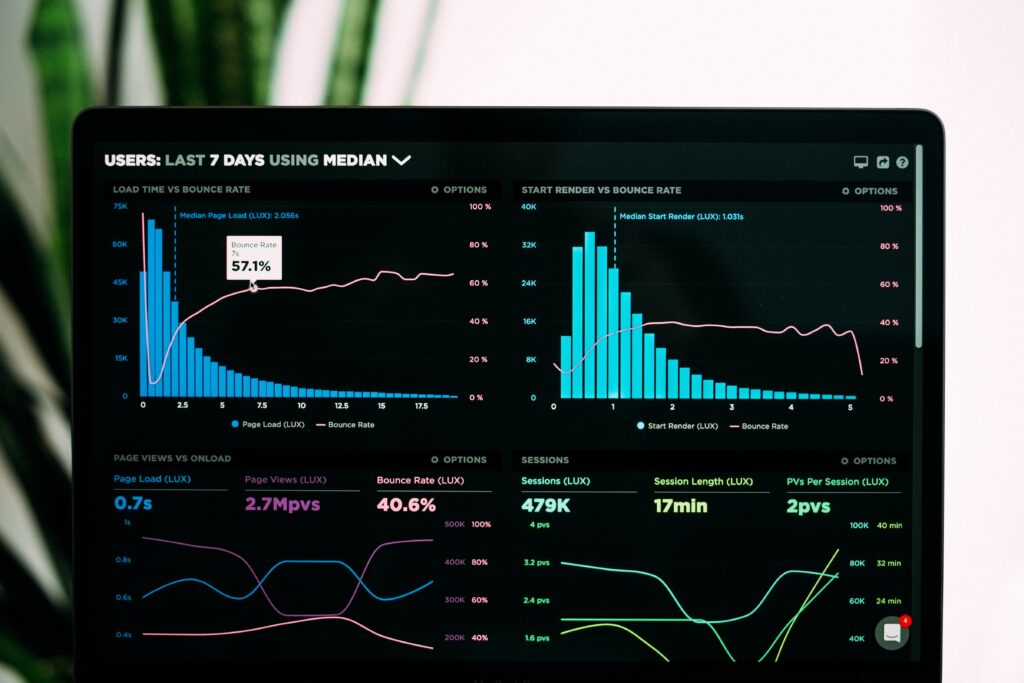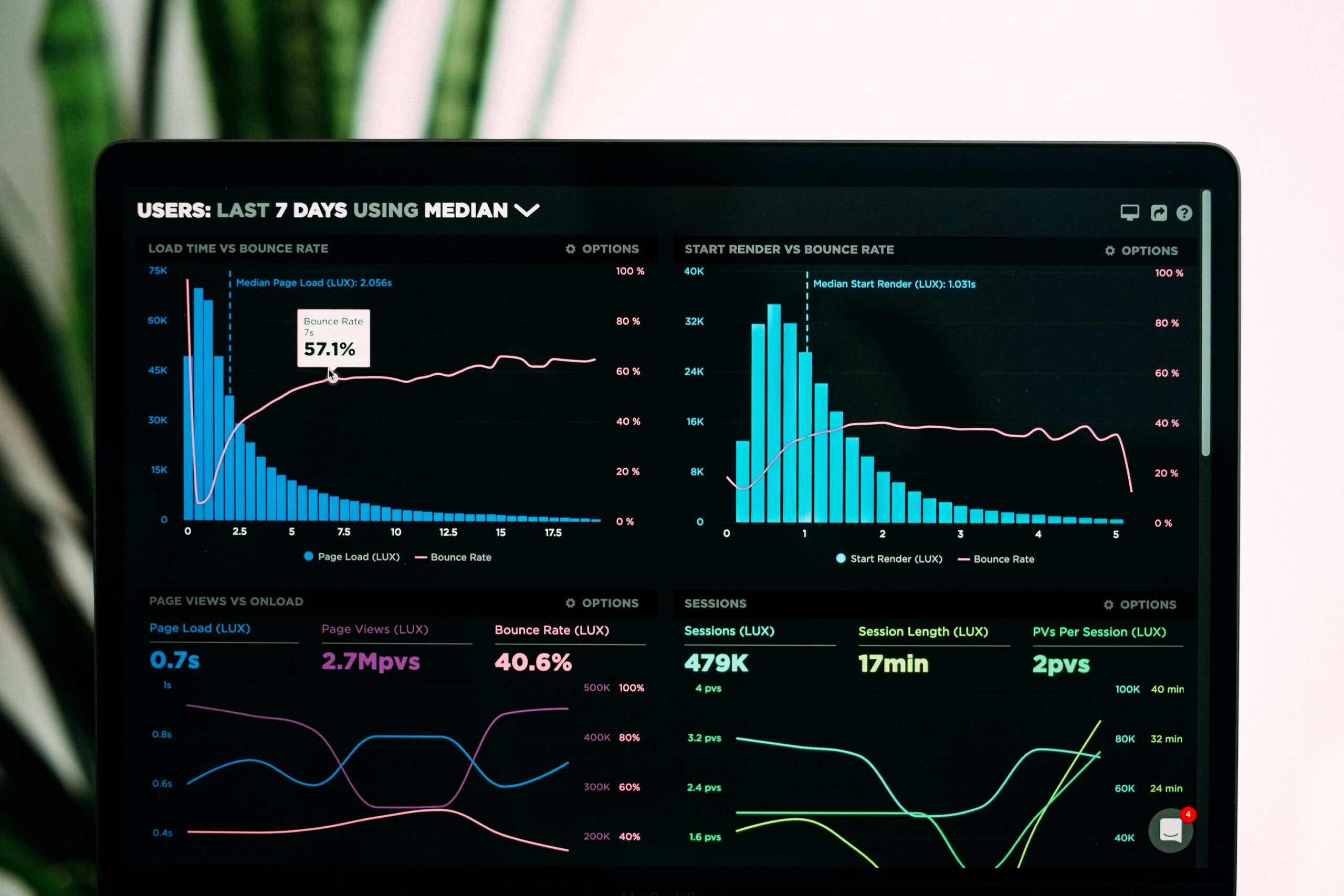In this article, we will explore the concept of data acquisition and its importance in various industries. You will learn about the process of collecting and analyzing data, as well as the tools and techniques commonly used in data acquisition. By the end, you will have a better understanding of how data acquisition can help organizations make informed decisions and drive success.

Definition of Data Acquisition
Understanding the concept
Data acquisition refers to the process of collecting and recording data from various sources to be utilized for analysis and decision-making purposes. This process involves the use of specialized tools and systems to capture and store data in a format that can be easily manipulated and analyzed.
In today’s digital age, data acquisition has become essential across various industries, including industrial automation, scientific research, environmental monitoring, medical diagnostics, and quality control. The data acquired can range from sensor readings to images, audio, video, and other forms of digital information.
Importance of data acquisition in the modern world
Data acquisition plays a crucial role in the modern world due to its numerous benefits and applications. It enables businesses and organizations to gather valuable insights that can help in improving efficiency, making informed decisions, and driving innovation.
For example, in industrial automation and control, data acquisition systems can monitor various parameters like temperature, pressure, and flow rate to optimize production processes and ensure product quality. In scientific research, data acquisition is used to collect experimental data, enabling researchers to analyze trends and patterns, leading to new discoveries and advancements.
Types of data acquisition systems
Data acquisition systems can be classified into different types based on their functionalities and configurations. The most common types include:
-
Standalone data acquisition systems: These are self-contained systems that include all the necessary components, such as sensors, signal conditioning, analog-to-digital converters, and data storage. They are typically used in applications where portability is required.
-
Distributed data acquisition systems: These systems consist of multiple interconnected modules that communicate with each other to acquire and process data. They are often employed in large-scale industrial applications where multiple data points need to be monitored simultaneously.
-
PC-based data acquisition systems: These systems utilize a personal computer (PC) as the central processing unit. They often rely on external modules or devices that connect to the PC via various interfaces such as USB, Ethernet, or PCIe.
-
Remote data acquisition systems: These systems are designed to acquire data from remote locations, such as unmanned monitoring stations or hard-to-reach areas. They use wireless communication technologies to transmit data to a central location for analysis and storage.
-
Cloud-based data acquisition systems: With the rise of cloud computing, data acquisition can now be performed using cloud-based systems. These systems enable real-time data monitoring and analysis from anywhere in the world, providing scalability and flexibility.
Components of Data Acquisition Systems
A data acquisition system typically consists of several components that work in unison to capture, process, and store data. These components include:
Sensors
Sensors are the primary interface between the physical or analog world and the digital data acquisition system. They convert physical phenomena, such as temperature, pressure, or light intensity, into electrical signals that can be measured and processed by the system.
Data acquisition systems employ a wide range of sensors, including thermocouples, pressure transducers, flow meters, accelerometers, strain gauges, pH sensors, and many more. These sensors are selected based on the specific application requirements and the type of data being collected.
Signal conditioning
Signal conditioning refers to the process of amplifying, filtering, and converting the analog signals from sensors into a format suitable for digital processing. Analog signals are often weak and susceptible to noise and interference, which can affect the accuracy and reliability of the acquired data.
Signal conditioning modules or circuits are used to remove noise, adjust signal levels, and optimize the signal-to-noise ratio. They may include amplifiers, filters, isolation circuits, and analog-to-digital converters (ADCs) that convert the analog signals into digital form.
Analog-to-digital conversion
Analog-to-digital conversion is a crucial step in the data acquisition process. It involves converting the continuous analog signals from sensors into discrete digital data that can be processed and stored by computers and other digital devices.
ADCs sample the analog waveform at regular intervals and assign a digital value to each sample based on its amplitude. The accuracy and resolution of the ADCs determine the fidelity of the acquired data, with higher bit resolutions providing finer details and improved accuracy.
Data storage and transfer
Once the data has been converted into digital form, it needs to be stored and transferred for further analysis. Data acquisition systems utilize various storage devices, such as hard drives, solid-state drives, or memory cards, to store the acquired data.
In addition to local storage, data acquisition systems may also incorporate data transfer mechanisms for real-time or remote monitoring and analysis. These can include Ethernet interfaces, USB ports, wireless communication modules, or cloud-based storage and analysis platforms.
Key Considerations in Data Acquisition
When selecting a data acquisition system, several key considerations need to be taken into account. These considerations ensure that the system meets the specific requirements and performance criteria of the intended application. The following are some of the crucial factors to consider:
Accuracy and resolution
The accuracy and resolution of the data acquisition system play a vital role in obtaining reliable and precise measurements. High-accuracy systems are required for applications where small measurement errors can have significant consequences. Similarly, higher resolution systems provide more detailed and accurate data.
Sampling rate
The sampling rate determines how frequently the system samples analog signals to convert them into digital form. It is typically measured in samples per second (SPS) or hertz (Hz). The sampling rate should be selected based on the signal frequency content to prevent aliasing and ensure accurate representation of the data.
Channel count
The channel count refers to the number of independent channels the data acquisition system can simultaneously monitor or measure. Different applications require varying numbers of channels to monitor multiple sensor inputs. The system should have enough channels to accommodate the required data points.
Signal noise and interference
Signal noise and interference can significantly affect the accuracy and reliability of acquired data. The data acquisition system should include proper signal conditioning techniques, such as filtering and shielding, to minimize noise and interference from external sources.
Compatibility and scalability
The data acquisition system should be compatible with the existing hardware and software infrastructure to ensure seamless integration and interoperability. Furthermore, the system should be scalable, allowing for the addition of more sensors or modules in the future as requirements change.
Applications of Data Acquisition
Data acquisition has numerous applications across various industries. Some of the key applications include:
Industrial automation and control
In industrial settings, data acquisition systems are used to monitor and control various processes, such as temperature, pressure, flow rate, and level. This enables real-time optimization, reduces downtime, and ensures quality control in manufacturing operations.
Scientific research
Data acquisition plays a critical role in scientific research, enabling researchers to gather and analyze experimental data. It is used in fields like physics, chemistry, biology, and environmental sciences to collect data on variables such as temperature, pressure, force, and chemical concentrations.
Environmental monitoring
Data acquisition systems are used for environmental monitoring, enabling the collection and analysis of data related to air quality, water quality, weather conditions, and other environmental parameters. This data is essential for assessing the impact of human activities on the environment and making informed decisions for sustainable development.
Medical diagnostics
In medical diagnostics, data acquisition systems are used to measure vital signs, such as heart rate, blood pressure, respiratory rate, and temperature. This data helps physicians monitor patient health, detect anomalies, and make accurate diagnoses.
Quality control and testing
In manufacturing and production industries, data acquisition is used for quality control and testing. By monitoring various parameters during the production process, such as dimensions, tolerances, and material properties, it ensures that products meet the required standards and specifications.

Advantages and Challenges of Data Acquisition
Data acquisition offers numerous advantages, but it also presents certain challenges that need to be addressed. Some of the advantages and challenges are:
Increased efficiency and productivity
By providing real-time data and insights, data acquisition systems help identify inefficiencies and bottlenecks in processes. This allows businesses to optimize their operations, improve productivity, and reduce costs.
Real-time monitoring and analysis
Data acquisition systems enable real-time monitoring and analysis, allowing for immediate detection and response to changes or anomalies. This is particularly beneficial in time-sensitive applications, such as process control, where prompt actions can prevent costly errors or accidents.
Data integrity and security
Data acquisition systems need to ensure the integrity and security of acquired data. Measures such as data encryption, access controls, and backup mechanisms are necessary to protect sensitive information from unauthorized access, loss, or corruption.
Cost and complexity considerations
Implementing a data acquisition system can involve significant costs, including equipment, software, and training expenses. Additionally, the complexity of setting up and maintaining these systems may pose challenges, requiring technical expertise and resources.
Integration with existing systems
Data acquisition systems need to seamlessly integrate with existing hardware and software infrastructure. Compatibility issues may arise when integrating new systems into legacy systems, requiring careful planning and coordination.
Data Acquisition Techniques
Data acquisition techniques can vary depending on the specific application requirements and constraints. The following are some of the commonly used data acquisition techniques:
Analog data acquisition
Analog data acquisition involves capturing continuous analog signals and converting them into digital form for processing. This technique is widely used in applications where the measured parameters exhibit continuous variations, such as temperature, pressure, and voltage.
Digital data acquisition
Digital data acquisition involves the direct measurement of digital signals or discrete events. This technique is commonly used in applications where the acquired data is already in digital form, such as counting events or monitoring digital communication protocols.
Hybrid data acquisition
Hybrid data acquisition combines analog and digital techniques to capture and process data from multiple sources. This technique is often used when multiple types of signals need to be acquired simultaneously, such as monitoring different sensor outputs in an industrial process.
Wireless data acquisition
Wireless data acquisition utilizes wireless communication technologies, such as Wi-Fi, Bluetooth, or cellular networks, to transmit data from remote locations to a central data acquisition system. This technique is especially useful in applications where wired connections are impractical or not feasible.
Cloud-based data acquisition
Cloud-based data acquisition leverages cloud computing platforms to store, analyze, and manage acquired data. This technique allows for real-time monitoring and analysis from anywhere in the world, eliminating the need for local storage and processing infrastructure.

Factors to Consider in Data Acquisition System Selection
When choosing a data acquisition system, several factors need to be considered to ensure the system meets the specific requirements of the application. The following are key factors to consider:
Application requirements
Understanding the requirements of the intended application is crucial in selecting a suitable data acquisition system. Factors such as the type and number of sensors, sampling rate, channel count, and required data storage capacity should be taken into account.
Budget constraints
Budget constraints play a significant role in determining the affordability and capabilities of a data acquisition system. It is important to balance the desired features and performance with the available budget to make an informed decision.
Ease of use and setup
The ease of use and setup of a data acquisition system can significantly impact its adoption and efficiency. Systems that offer intuitive user interfaces, easy configuration, and quick setup can reduce the learning curve and minimize downtime.
Compatibility with software and hardware
Compatibility with existing software and hardware infrastructure is essential to ensure seamless integration and interoperability. It is crucial to consider the required software drivers, programming languages, and communication protocols to ensure compatibility with the data acquisition system.
Technical support and warranty
Choosing a data acquisition system from a reputable manufacturer that provides reliable technical support and offers a comprehensive warranty can provide peace of mind. Timely support and warranty coverage can help resolve any issues that may arise during installation, setup, or operation.
Recent Developments in Data Acquisition
Data acquisition continues to evolve with advancements in technology. Some of the recent developments that have had a significant impact on data acquisition include:
Advancements in sensor technology
Sensor technology has seen significant advancements in terms of accuracy, miniaturization, and power efficiency. These advancements have enabled the development of more sensitive and reliable sensors, expanding the possibilities for data acquisition applications.
Integration of artificial intelligence
Artificial intelligence (AI) techniques, such as machine learning and deep learning, are being integrated into data acquisition systems. AI algorithms can analyze vast amounts of acquired data, identify patterns, and make predictions, enabling more advanced and intelligent data analysis.
Internet of Things (IoT) integration
The integration of data acquisition systems with the Internet of Things (IoT) has revolutionized data acquisition and monitoring. IoT-enabled sensors and devices can transmit data wirelessly to centralized systems, allowing for real-time monitoring, analysis, and control over vast networks of interconnected devices.
Cloud-based data storage and analysis
Cloud computing has transformed data acquisition by providing scalable and cost-effective storage and analysis capabilities. Cloud-based data acquisition systems enable real-time data monitoring and analysis from anywhere, improving accessibility and flexibility.
Future Trends in Data Acquisition
Data acquisition is expected to continue evolving with ongoing technological advancements. Some of the future trends that are likely to shape the field include:
Increased use of wireless and IoT technologies
Wireless and IoT technologies are expected to play a more prominent role in data acquisition systems. The use of wireless communication and IoT-enabled devices will enable more flexible and scalable data acquisition solutions, reducing the reliance on wired connections.
Improved data analysis and visualization
Advancements in data analysis and visualization techniques will enable the extraction of meaningful insights from acquired data. This will allow for more advanced trend analysis, predictive modeling, and decision-making capabilities.
Enhanced data security and privacy measures
As data acquisition becomes more widespread, ensuring data security and privacy will become increasingly important. Stricter data protection measures, encryption methods, and privacy controls will be implemented to mitigate risks and address regulatory requirements.
Advancements in miniaturization and portability
Miniaturization and portability will play a crucial role in the future of data acquisition systems. Smaller and more portable devices will allow for data acquisition in previously inaccessible areas, enabling new applications and expanding the possibilities for data-driven decision-making.
Conclusion
In conclusion, data acquisition is a critical process that involves capturing and recording data from various sources for analysis and decision-making purposes. It has become indispensable in the modern world, with applications ranging from industrial automation and scientific research to environmental monitoring and medical diagnostics.
By incorporating components such as sensors, signal conditioning, analog-to-digital conversion, and data storage and transfer mechanisms, data acquisition systems enable the acquisition of accurate and reliable data in various formats. However, selecting the right data acquisition system requires careful consideration of factors such as accuracy, sampling rate, channel count, compatibility, and budget constraints.
Advancements in technology have further enhanced data acquisition techniques, with developments in sensor technology, artificial intelligence integration, IoT integration, and cloud-based data storage and analysis. These advancements have paved the way for future trends, such as increased use of wireless and IoT technologies, improved data analysis and visualization, enhanced data security and privacy measures, and advancements in miniaturization and portability.
With its numerous advantages, data acquisition is poised to continue driving innovation and transforming industries. By leveraging the power of data, businesses and organizations can gain valuable insights, make informed decisions, and fuel future advancements across various sectors.

